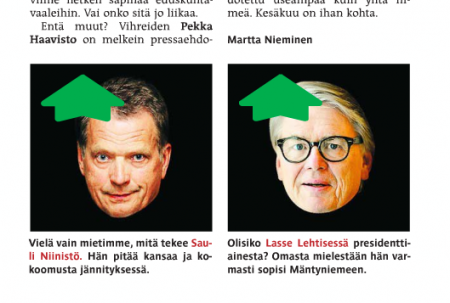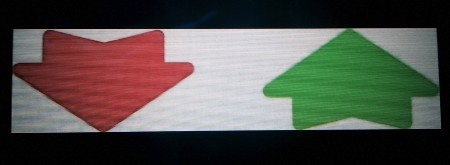David Remnick is 52. He’s got all of his hair, which is black, and he’s got an office with quiet brown carpeting and a desk made of a slab of grainy black wood and a fat-rimmed yellow ceramic cup that holds his pens and his pair of scissors. He’s smart and quick to laugh, and if you sit in one of the square soft chairs in his office, he remembers things about your life that you barely remember. He likes baseball and The Wire and AJ Liebling and spaghetti with squid ink sauce. You might feel jealous of him except that he works too hard and nobody else would want that kind of constant hellish weekly pressure. His wife, Esther Fein, is a writer, and he’s got three kids. He’s the fifth editor of The New Yorker, which may be the best magazine ever published.
Toimittaja, joka sai Teräsmiehen kaatamaan Ku Klux Klanin
Stetson Kennedy oli kova äijä. Hän osoitti, ettei Ku Klux Klan ollut hyväntekeväisyysjärjestö, jolloin Yhdysvaltain verottaja iski kiinni (”hipit hei, teillä on 700 000 dollarin verot maksamatta”), mikä teki klaanin toiminnasta hankalaa.
Mutta vielä siistimpi veto oli se, että Kennedy kirjoitti Terämies-radio-ohjelmaan juttuja, joissa Teris taisteli KKK:ta vastaan. Jaksojen lopuksi lueteltiin klaanin kokoukseen osallistuneiden nimiä, mikä taas teki rekrytoinnista hankalaa.
Vitsi mikä tyyppi.
Lähde: On The Media
Ikiaikainen viisaus freelancereille
Oikeastaan tämä viisaus on suunnattu ostaville toimittajille, mutta menköön:
But remember, as my friend Mike Dolan says, every assignment has three elements: price, deadline, and quality. The assigning editor gets to pick two.
Lähde oli Jack Shaferin haastattelu.
Aiemmin: Opas työn hinnoitteluun
Koira söi kotiläksyt ja tietokone koko lehden
Aina välillä saattaa käydä näin:
Fairfax Media has apologised for its failure to publish four newspapers this morning, including The Press in Christchurch and The Dominion Post in Wellington. A computer fault was to blame, but the company says it still hasn’t worked out exactly what went wrong.
Kun minä olin pieni, koira söi läksyt oli kulunut tekosyy. Tietokone söi sanomalehteni kuulostaa suunnilleen yhtä uskottavalta.
Nuoren toimittajan kalenterissa ei ole viikonloppua
Havahduin päivänä eräänä siihen, että harva tutuistani tekee töitä ma–pe 9–17. Sen huomaa siitä, että yhteisten tapahtumien järjestäminen on harmillisen hankalaa, kun iso osa ihmisistä tekee vuorotyötä. Se taas rikkoo erinäisiä oletusarvoja, kuten että iltaisin on vapaa-aikaa tai että viikonloppuisin voidaan tavata isolla porukalla.
Veikkaan, että työajat asettuvat normaalimpiin uriin – jos tällainen varsin ladattu termi sallitaan – sitä mukaa mitä vanhemmaksi ihmiset tulevat. Perheetön pätkätyöläinen tekee töitä milloin vaan, mutta vakipaikan saanut päälle kolmikymppinen saattaa jopa vältellä viikonloppuihin tai iltoihin sijoittuvia keikkoja.
Olen vapaana toimittajana tottunut siihen, että työskentelen vähän milloin sattuu, vaikka yritänkin synkronoida työaikani jossain määrin tyttöystävän kanssa. Jopa meidän kahden yhteisten tekemisten aikatauluttaminen vaatii kalenterien konsultoimista, ja homma muuttuu astetta monimutkaisemmaksi, jos mukaan pitäisi saada vaikka puolenkymmentä tyyppiä.
Näkyykö sama ilmiö myös muualla kuin nuorten journalistien piireissä?
Dokumenttielokuva New York Timesistä
John McPhee puhuu nonfiktiosta
Paris Review haastatteli John McPheetä pitkään ja hartaasti. Jos herran työ ei ole tuttua, kannattaa aloittaa vaikka The New Yorkerin arkistoista (A Fleet of One on maksumuurin ulkopuolella) tai sitten Amazon.comin kirjavalikoimasta. Haastattelu on lukemisen arvoinen, vaikka se alkaakin vähän hitaasti elämäkerturoinnilla.
Tässä muutamia makupaloja. Fiktio- ja faktakirjoittamisen erosta:
But once I started writing, I had to tell a story. It’s the story of a journey. Within that journey certain things happened, such as an encounter with a big grizzly. That grizzly encounter was a pretty exciting thing, and it happened near the beginning of the trip. That was somewhat inconvenient structurally, because it’s such a climactic event. But you can’t move that bear, because this is a piece of nonfiction writing.
Rinnastusten voima:
I knew where I was going to start, but I didn’t know the body of the thing. I went into a seminar room here at the university, and I laid the thirty-six cards out on the table. I just looked and looked at them. After a while I was looking at two cards: Upset Rapid, which is a big-time rapid in the Colorado River, and Alpinist. In Upset Rapid, Brower doesn’t ride the rapid. Why doesn’t he ride the rapid? His answer to Floyd Dominy is, “Because I’m chicken.” That’s a pretty strong scene. What next? Well, there are more than seventy peaks in the Sierra Nevada that were first ascended by David Brower, hanging by his fingernails on some cliff. “Because I’m chicken”? This juxtaposition is just loaded with irony, and by putting the Alpinist right after Upset Rapid, in the white space between those two sections there’s a hell of a lot of stuff that I don’t have to say. It’s told by the structure. It’s all crackling along between those two things. So I put those two cards side by side. Now there are thirty-four other parts there on the table.
You look for good juxtapositions. If you’ve got good juxtapositions, you don’t have to worry about what I regard as idiotic things, like a composed transition. If your structure really makes sense, you can make some jumps and your reader is going to go right with you. You don’t need to build all these bridges and ropes between the two parts.
Aiheiden yhdistämisestä:
I’d started with single profiles, and when I’d done enough of them, I began to want to do a double profile. Two people at once, with the idea that one plus one might equal more than two. Who would it be? A great example for a project like that would be Frank Gehry and Peter Lewis. This Peter Lewis is some character—a one-legged insurance billionaire who lives much of the year on one of the largest yachts in the world and was once caught carrying pot into New Zealand. And he donated the sixty million bucks to build the new library here on campus. And Frank Gehry is Frank Gehry. These two guys have to know each other—that library’s built here because Peter Lewis gave the money and said that Frank Gehry would be the architect. If you did a profile of Frank Gehry and a profile of Peter Lewis, and you put them in the same piece of writing, one plus one would add up to three point six.
Rakenteen vapauttavasta vaikutuksesta:
It sounds very mechanical, but the effect is the exact opposite. What it does is free you to write. It liberates you to write. You’ve got all the notes there; you come in in the morning and you read through what you’re going to try to write, and there’s not that much to read. You’re not worried about the other ninety-five percent, it’s off in a folder somewhere. It’s you and the keyboard. You get away from the mechanics through this mechanical means. The spontaneity comes in the writing, the phraseology, the telling of the story—after you’ve put all this stuff aside. You can read through those relevant notes in a relatively short period of time, and you know that’s what you want to be covering. But then you spend the rest of your day hoping spontaneous things will occur.
Paris Review’n Art of Nonfiction -sarjassa on julkaistu kaksi muutakin haastattelua, nimittäin Joan Didionin ja Gay Talesen, mutta niitä en ole ehtinyt vielä lukea.
Amerikassa freelancerin huoletkin ovat suurempia
Myönnän – kun puhun julkisesti freelancerin hommasta, puhun yleensä sen huonoista puolista. Siihen vaikuttaa tietenkin se, että yrittäjänä toimiminen on journalistille nihkeä paikka. Ei ole sosiaaliturvaa eikä oikein mahdollisuutta muuttaa yrittäjäriskiä rahaksi.
Amerikassa kaikki on suurempaa, myös freelancereiden ongelmat. Cinematical-elokuvablogin toimitus koostui permalancereista, jotka saivat äskettäin kaikki kenkää. Eric D. Snider kertoo tapahtumista blogissaan. Hauskaa tässä on se, että irtisanottuaan sopimukset pomot lähettivät toimittajille sähköpostia, jossa pyydettiin heitä kirjoittamaan ilmaiseksi:
You will be invited to contribute as part of our non-paid blogger system; and though I know that for many of you this will not be an option financially, I strongly encourage you to consider it if you’d like to keep writing for us, because we value all of your voices and input.
Mustalla tavalla hauskaa on sekin, että sen jälkeen kun Snider julkaisi irtisanomismeilin, viestin lähettäjä sai kenkää. Tai kuten Snider asian muotoilee, You’ve heard of ”shooting the messenger”? AOL shot the messenger who delivered its own message. You’ve got fail.
Automaattisen iPad-taiton haittapuolia
Eilisen Hesarin iPad-version sunnuntaisivuilla oli juttu, jonka kuvissa on jotain kummallista:
Paperilehdestä näki, mitä siellä olisi pitänyt olla:
Kun klikkasi taulutietokoneen ruudulla näkyvät punavihreät sutut isommaksi, mysteeri selviää:
Mitä ilmeisemmin nuolikuva on tiedosto, jossa on molemmat nuolet ja niistä rajataan näkyviin vain toinen. Automaattisesti tehtävä iPad-taitto ei moista hienoutta tajua, vaan lämäisee mukaan kuvan rajaamattomana.
Hei Talentumin urpot, bannerin koolla on yläraja
Kävin tässä lukemassa uutista uutissivustolta. Sivun latauduttua koko ruudun täyttäväksi levitetty selain näytti tältä:
Tyypit hei, jos en katsoisi selainvälilehteä tai url-kenttää, en edes tietäisi, minkä lehden sivuilla olen.
Arvostan tarvetta kerätä massia mainoksilla, mutta tämä on naurettavaa pelleilyä. Jossain vaiheessa jonkun olisi pitänyt sanoa, että anteeksi mutta meidän saitti näyttää hevonperseeltä, jos sinne laitetaan niin iso mainostörppö, ettei edes julkaisun nimi näy skrollaamatta
. Ei sanonut.




